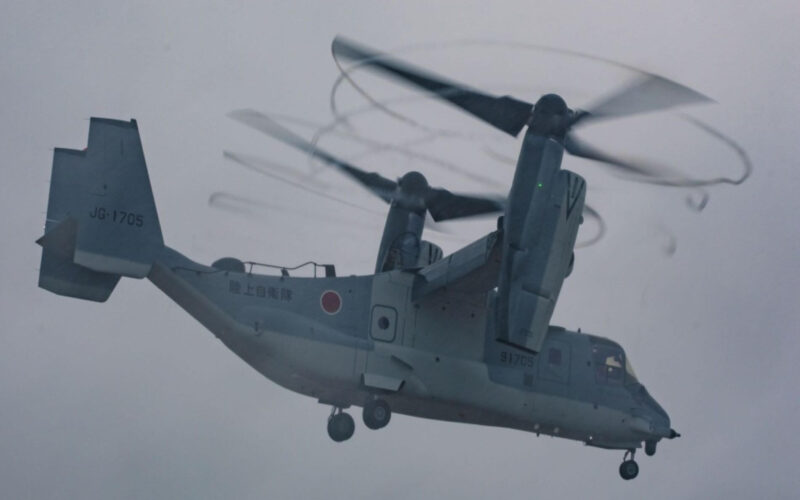Japan becomes the first foreign operator of the U.S.-made tiltrotor aircraft, a move anticipated for almost a decade, despite the objections by local citizens and government. Two Ospreys arrived at the joint U.S.-Japanese base at Kisarazu, fifteen remain on the waiting list.
Japanese Self Defense Force ordered 17 Bell-Boeing V-22B Block Cs back in 2015, but deliveries were plagued with problems. A history of aircraft’s reliability issues attracted attention and doubts about the necessity of the purchase, an issue exacerbated by the crash of a US Marine Osprey off the Okinawa coastline in 2016.
Bell claims at least four V-22s were ready for delivery since 2018, but the local Japanese government and citizens living around the camp Kisarazu opposed their deployment. As the first Ospreys arrived in Japan onboard a cargo ship in May, they were met by a small group of protesters, an echo of at least 25,000-strong protests organized in 2012, when the plans to buy the new aircraft were first announced.
Japanese Ospreys were assembled and inspected at U.S. Marine Corps Air Station Iwakuni, then transferred to Kisarazu, the place of their deployment for at least 5 years. The base also houses Ospreys belonging to the U.S. Marine Corps and Air Force.
V-22 Osprey combines speed and operational range comparable to fixed-wing aircraft with vertical takeoff and landing of helicopters, employing a tilt rotor design.It is the only mass-produced military vehicle to do so.
Bell is currently developing another tiltrotor aircraft, the V-280 Valor, which is competing to be a replacement of the Black Hawk workhorse. The aircraft can reach a top speed of 520km/h (280 knots, hence its name).

